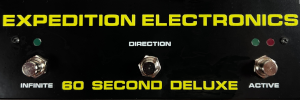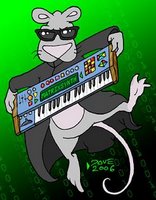Note: links to listings are affiliate links for which the site may be compensated.
via this Vemia listing
Note: listings are ending today with a handful extended through Sunday.
Click the auction link on top when you get there for additional listings.
"Bought from new, absolutely flawless and very lightly used. This is the incredible. Luma-1 drum machine which is the only faithful clone of the Linn LM-1, made with Roger Linn's blessing."
Showing posts sorted by date for query Roger Linn. Sort by relevance Show all posts
Showing posts sorted by date for query Roger Linn. Sort by relevance Show all posts
Saturday, November 08, 2025
Friday, November 07, 2025
Akai CUT Roger Linn?! The Wild MPC60 Story + Prodigy Sampling Breakdown
video upload by Nostalgic Explorer
"The Akai MPC60 by Roger Linn is the machine that reshaped hip-hop, electronic, trip-hop, and rave culture. Today, I'm diving into why this legendary sampler still inspires producers, and then I jump into a hands-on sampling session inspired by The Prodigy — 'Smack My B%tch Up' from The Fat of the Land era.
I’ll explore its story — from design breakthroughs and 12-bit grit, to the Akai drama that cut Roger Linn out of his own creation — and then I’ll show you how to sample, trim, assign pads, sequence, and jam directly on the MPC60.
What you’ll learn:
• Why the MPC60 became a classic
• How early electronic pioneers used it
• Sampling on the MPC60 step-by-step (The Basics)
• Assigning pads, bars & sequencing
• Playing & jamming the samples on the MPC
I’ll show you a simple way to start sampling and building beats on the MPC60 using The Prodigy’s iconic track as inspiration, no plugins, no DAW, just the machine."
00:00 — Intro: Why the Akai MPC60 changed music forever
00:35 — MPC60 history: specs, limitations & the Roger Linn drama
02:33 — Why producers still love the MPC60 (Dilla, Shadow, Prodigy & more)
03:28 — Sampling The Prodigy “Smack My B%tch Up” on the MPC60
05:56 — How to sample a song on the MPC60 (step-by-step)
06:15 — How to assign a sequence on the MPC60
06:41 — How to set the number of bars on the MPC60
07:00 — How to record a new sample on the MPC60
07:20 — How to set sample length (seconds) on the MPC60
07:56 — How to check recording levels (REC METER) on MPC60
08:44 — How to name and save a sample on the MPC60
09:26 — How to edit and trim a sample on the MPC60
10:19 — How to assign a sample to pads on the MPC60
10:47 — Poly vs Mono: stop samples from overlapping on the MPC60
12:28 — Playing and testing samples on the MPC60
13:10 — MPC60 live jam: “Smack My B%tch Up” Prodigy-style
15:03 — Outro & final thoughts of the MPC60
Thursday, October 02, 2025
Intuitive Instruments Improves Exquis MPE Controller with Firmware 2.2.0 Update
video uploads by Intuitive Instruments
Exquis - Ableton Live integration (feat Primo Taut)
video upload by Intuitive Instruments
Press release follows:
Intuitive Instruments improves Exquis MPE controller with firmware 2.2.0 update alongside Ableton Live, Bitwig Studio, and Cockos Reaper workflow-merging scripts
SAINT-CYPRIEN, FRANCE: Intuitive Instruments is proud to announce improvements to the award-winning Exquis MPE (MIDI Polyphonic Expression) controller with major updates coming courtesy of introducing firmware 2.2.0 alongside software scripts to merge its workflow with Ableton Live, Bitwig Studio, and Cockos Reaper DAWs (Digital Audio Workstations) — wholeheartedly representing several simultaneous steps towards the inspirational solutions for music lovers creator’s goal of ultimately making music-making seamless by turning the flagship instrument itself into the ultimate lightweight and compact creative hub — as of September 8…
Exquis enables seamless and natural interaction with all DAW software, MIDI synthesizers, and modular systems by becoming a direct extension of its user’s creativity as an expressive and intuitive MPE controller comprising a hexagonal matrix of 61 backlit soft silicon keys arranged as consecutive notes (semitones) horizontally and harmonious notes (thirds) vertically — from the lowest at the bottom to the highest at the top — that provide independent gestural control over four different dimensions: velocity (strike force), horizontal tilt (X axis — pitch bend), vertical tilt (Y axis — CC#74), and pressure (Z axis — channel pressure or polyphonic aftertouch). Alongside a namesake companion app — itself optionally offering an experience akin to traditional composition software — available on macOS and Windows with support for VST, VST3, and AUv3 audio plug-in formats, Intuitive Instruments’ flagship instrument is intended to provide musicians of all levels with a fun and intuitive way of creating melodies and progressions, fully exploiting sonic potential in the process of doing so — whether working with third-party software over the USB (Type-C) connection, third-party software or hardware synthesizers through the MIDI IN and OUT (minijack) connections, and modular synthesizers via CV (control voltage) with dedicated 0-5V (minijack) connections for GATE (V-Trigger), PITCH (V/Oct), and MOD (pressure or velocity). These top out a lightweight (600g) and compact — 36 mm (H) x 146 mm (W) x 317 mm (D) — desktop design that also incorporates four rotary/push encoders and a six-zone capacitive touch slider, plus a series of selection, undo/redo, and action buttons, providing precise and intuitive control collectively over any user’s sound while enhancing interaction with the app.
Wednesday, September 10, 2025
Linn LM-1 Drum Computer SN 00088
Note: links to listings are affiliate links for which the site may be compensated.
via this Reverb listing
"The very first version of the legendary Linn Drum LM-1, assembled by Roger Linn himself.
Here is one of the very first units manufactured among the 525 existing ones.
A true collector's item that made history in music.
Used by the greatest, Prince, Michael Jackson, Stevie Wonder, and all the music from that era.
Incredible and timeless sound and groove."
via this Reverb listing
"The very first version of the legendary Linn Drum LM-1, assembled by Roger Linn himself.
Here is one of the very first units manufactured among the 525 existing ones.
A true collector's item that made history in music.
Used by the greatest, Prince, Michael Jackson, Stevie Wonder, and all the music from that era.
Incredible and timeless sound and groove."
Tuesday, September 09, 2025
Roger Linn: The King of Drum Machines
video upload by Jack Pearson
"This is the story of Roger Linn, a guitarist from Los Angeles whose innovative sample based drum machines changed the sound of music forever.
Special thanks to Roger himself for featuring my video in the September Linnstrument newsletter (https://myemail.constantcontact.com/L...) and on his website (https://www.rogerlinndesign.com).
I first learned about Roger a few years ago while making a film called “The History of Sampling in Music” [below]. While I didn’t know anything about Roger at the time, I was astounded to learn that he had created both the LinnDrum and the MPC, which shaped the punchy robotic drums of 80s pop music and the grungy experimental grooves of 90s hip-hop respectively. I did a quick bit of research about him for my video, but didn’t really dig much deeper than that… However, a few months ago I decided to rewatch my old project, which reignited my interest in Roger’s story and gave me the idea for this video.
Like my previous project, I’d initially planned to write a script and do a voice-over, but after discovering the assortment of recorded interviews that Roger has already appeared in, I realised that I could just chop them up and have Roger tell his own story. I thought 'hey that sounds pretty cool, how hard could it be?'
Well, let’s just say I’m probably never going to do something like this again. I did enjoy making this and I am proud of it, but if I had just done a voice-over not only would it have been easier to make, but I also could’ve included a lot information without it feeling incredibly clunky. The initial cut was about 26 minutes, but I cut out loads of stuff for the sake of pacing and trying to stick to narrative beats. Roger is a fascinating guy with a lot of great anecdotes though, so if you enjoyed this video then I highly recommend you seek out some of the podcasts/interviews he’s done over the years.
I planned on making all the music for this film myself, but decided it would be better to use music that relates to Roger in some way (for example, he co-wrote 'Promises' by Eric Clapton and 'Quittin’ Time' by Mary Chapin Carpenter, and first used the LM-1 Drum Computer on the Leon Russell album 'Life & Love' which featured the track 'One More Love Song'.) I salvaged one of these demo tracks for the credits, but you can listen it and a few more scrapped tracks here:
Since you’ve read this far, here’s a few bonus Roger facts that got cut out of the video:
The LM-1 was featured on the best selling album of all time - 'Thriller' by Micheal Jackson, as well as other early 80s hits like 'Maneater' by Hall & Oates, 'Valerie' by Steve Winwood, and for some reason - the original 1983 Thomas the Tank Engine theme song.
Roger hired his friend, a professional session drummer called Art Wood, to record most of the sounds on the LM-1. They set up the kit in Roger’s closet, recording each of the drums one at a time… then called it a day. Given the popularity of the songs featuring these recordings - Art Wood is technically one of most prominently featured drummers of all time.
And here's two bonus facts about this video:
The title 'The King of Drum Machines' is a quote from the father of MIDI - Dave Smith, when he spoke about Roger and the Tempest drum machine (which they built together) on a Sweetwater panel in 2015. [below]
This video was released on Roger’s 70th birthday.
I hope you enjoy it!" The History of Sampling in Music (2022)
video upload by Jack Pearson
The Inventors of Synth (Roger Linn, Dave Smith & Tom Oberheim) - Sweetwater Gearfest 2015
video upload by Sweetwater
"Join Mitch Gallagher as he moderates 'The Inventors of Synth' panel discussion at Gearfest '15. Featuring industry icons Dave Smith, Tom Oberheim, and Roger Linn discussing their thoughts on the past, present, and future of analog synthesizers and controllers.
Legendary synth designer and Grammy-winner Dave Smith was the founder of Sequential Circuits in the mid-'70s. His Prophet-5, the world's first fully programmable polyphonic synth, was the first musical instrument with an embedded microprocessor. Dave is also known as the driving force behind the development of the MIDI specification. He has continued to innovate, and recently unveiled his latest synth creation, the Sequential Prophet-6.
A pioneer of the synth and MIDI world, Tom Oberheim co-designed the Synthesizer Expansion Module (SEM), a device that allowed musicians to simultaneously combine live playing and sequenced playback - a concept that pre-dated the MIDI revolution. In 1981, he, along with Roland's Ikutaro Kakehashi and Sequential's Dave Smith, developed the MIDI spec, which changed the course of modern music. Tom recently re-released his famed Two Voice synth.
Technical Grammy award-winner Roger Linn invented the LM-1 Drum Computer (the first sample-based drum machine) in 1979. He later designed the Akai MPC60, which combined a sampling drum machine with a real-time MIDI sequencer. His guitar effects unit, AdrenaLinn, has been used on hit recordings by John Mayer and Red Hot Chili Peppers. In 2014 he released the LinnStrument, an expressive MIDI performance controller."
LABELS/MORE:
Akai,
documentaries,
DSI,
Interviews,
Linn,
Oberheim,
RogerLinn,
Sequential,
Sweetwater Gearfest
Thursday, August 21, 2025
Synth Legends (2005): Bob Moog, Tom Oberheim, Dave Smith, Marcus Ryle, Roger Linn
video upload by moogfoundation
"Get your SYNTH LEGENDS Limited Edition T-Shirt here: bit.ly/SynthLegendsTshirt
Pre-orders open through August 25th!
Join us live on August 21, 2025 at 8 pm EDT as we present the entire 𝘚𝘺𝘯𝘵𝘩 𝘓𝘦𝘨𝘦𝘯𝘥𝘴 symposium from April 19, 2005 - Bob Moog’s final public appearance. This historic event, originally organized by Russ Jones of AudioMIDI, brings together synth pioneers Bob Moog, Tom Oberheim, Dave Smith, and Marcus Ryle, with Roger Linn moderating. For the first time ever, the full 1-hour and 38-minute symposium will be broadcast in its entirety.
Note: the original audio recorded at this 2005 event was only captured on the camera mics and is not studio-perfect. We’ve worked to make audio enhancements, including painstaking audio mastering by Harold LaRue (https://haroldlaruemastering.com), to make this once-in-a-lifetime conversation as clear as possible. We suggest turning on closed captioning in order to not miss any of the content.
During the stream, join Tom Oberheim, Denise Smith (Dave Smith’s widow), Marcus Ryle, and Michelle Moog-Koussa (Bob Moog’s daughter and Executive Director of the Bob Moog Foundation) in the live chat as they share reflections, answer your questions, and provide personal insights into the legacy of Bob Moog and synthesis history.
Huge thanks to our sponsors, without whom this broadcast would not have been possible:
Platinum Sponsors:
Moog Music – https://moogmusic.com
Sequential / Oberheim – https://sequential.com https://oberheim.com
Spectrasonics – https://spectrasonics.net
Gold Sponsors:
Arturia – https://arturia.com
Korg USA – https://korgusa.com
Roland – https://roland.com
Silver Sponsors:
Cherry Audio – https://cherryaudio.com
GForce Software – https://gforcesoftware.com
ILIO – https://ilio.com
Rosen Sound – https://rosensound.com |
Softube – https://softube.com
Special thanks to: Russ Jones, Harold LaRue, Dave Gross, Mark Ethier, Marcus Ryle, Tom Oberheim, Denise Smith, Roger Linn, Axel Hartmann, and David Mash, all of whose contributions helped make this possible.
Why watch?
Experience the inspiring reflections of five synth legends.
Hear behind‑the‑scenes stories of innovation from the pioneers themselves.
Celebrate Bob Moog’s enduring legacy on the 20th anniversary of his passing.
Mark your calendars and bookmark this page! You won’t want to miss this very special tribute. Feel free to share with fellow synth lovers, and join us live on the 21st to celebrate the magic of synthesis together.
–
Synthesizer pioneer Bob Moog passed away on August 21, 2005. Throughout the month of August, we will share an informal remembrance video series, Voices for Bob, featuring musicians, technologists, innovators, and colleagues as they remember and reflect on Bob's indelible legacy.
▶️ "Voices For Bob" Shorts series:
▶️ "Moog Memories” video: bit.ly/MoogMemories [posted here]
Help us carry Bob's legacy forward to inspire future generations through the intersection of science, music, history, and innovation. Support our work by doing one (or all) of the following:
🌐 Visit the Bob Moog Foundation: https://www.moogfoundation.org"
Thursday, August 07, 2025
Voices For Bob: Drum machine & synth pioneer Roger Linn recalls meeting Bob Moog
video upload by moogfoundation
"Roger Linn is an innovative engineer, designer, and musician best known for creating the LinnDrum, one of the first drum machines to use digital samples of real drums. His groundbreaking instruments helped define the sound of 1980s pop, hip-hop, and R&B, and he later co-developed the Akai MPC series, a cornerstone of modern beat-making. Linn continues to push boundaries with expressive instruments like the LinnStrument.
In this video, Roger shares a story about meeting Bob Moog at NAMM.
Roger Linn Design: https://www.rogerlinndesign.com
Synthesizer pioneer Bob Moog passed away on August 21, 2005. Throughout the month of August, we will share an informal remembrance video series, Voices for Bob, featuring musicians, technologists, innovators, and colleagues as they remember and reflect on Bob's indelible legacy.
Help us carry Bob's legacy forward to inspire future generations through the intersection of science, music, history, and innovation. Support our work by doing one (or all) of the following:
🌐 Visit the Bob Moog Foundation: https://www.moogfoundation.org"
Monday, August 04, 2025
Moog Memories: Remembering Bob Moog & the Impact of Moog Synthesizers 20 Years After His Passing
video upload by moogfoundation
"Synthesizer pioneer Bob Moog passed away on August 21, 2005. His indelible legacy lives on through the synthesizers he created, through his warm, humble personality, and through the work of the Bob Moog Foundation.
Please consider honoring Bob's legacy by donating to or becoming a member of the Bob Moog Foundation.
Donate here: https://bit.ly/ContributeBMF
Become a member here: https://bit.ly/BMFMembership
Featured in this video are Bob's colleagues, iconic musicians, and electronic music luminaries lending insights into working with Bob, being empowered by Moog synthesizers, and guiding Bob's legacy forward. Many thanks to our friends at @WaveshaperMedia for creating this video from interviews from the upcoming Electronic Voyager documentary.
Other cool ways to support the Bob Moog Foundation:
Visit our website: www.moogfoundation.org
Sign up for our newsletter here: https://bit.ly/BobMoogFoundationNewsl...
Shop our online store: https://bit.ly/shopbmf
Visit us at the Moogseum in Asheville, NC: www.moogseum.org
Omnisphere user? Check out the Bob Moog Tribute Library v2 (100% proceeds donated to the Bob Moog Foundation): https://bit.ly/BobMoogTributeLibrary
Join us on this channel at 8 pm (ET) on August 21, 2025, the 20th anniversary of Bob's passing, when we will be streaming the 2005 Synth Legends symposium featuring Tom Oberheim, Dave Smith, Bob Moog, and Marcus Ryle, with Roger Linn moderating. Read more about this event here: https://bit.ly/SynthLegendsEvent"
Saturday, August 02, 2025
Linn LM-1 LinnDrum Computer SN 00035 Built In Roger Linn's Home
Note: links to listings are affiliate links for which the site may be compensated.
via this Reverb listing
 "RARE piece of Linn Drum LM-1 history. This machine has been updated by the one and only Bruce Forat from Forat Electronics. Bruce is THE repairman for these machines and he has this one cleaned up oh so nice.
"RARE piece of Linn Drum LM-1 history. This machine has been updated by the one and only Bruce Forat from Forat Electronics. Bruce is THE repairman for these machines and he has this one cleaned up oh so nice.
Debuting in 1980, these first LM-1 were $5,000 then! During my research, I found that Roger Linn created the first 35 of the machines in a room in his house.This gem is #00035 meaning this was the last one built by Roger before mass production!
This comes with a custom made dust cover and I'm guessing an original manual in a cool shade of Chevy Chase pool blue 80s folder! It will be shipped in a SKB 24x24 case built like a tank.
I've held onto this machine for 25 years and had Bruce tweak it along the way. Now it's time for me to purchase a vehicle so I hope someone else can love it as much as I have. I had Bruce to add the exact signature Prince clap sound as heard on the Purple Rain album. I can also give the winner Bruce's contact information as he is a tremendous resource."
Additional resources: Linn LM-1 page on Culture Wikia
Roger Linn on Sessiondays
via this Reverb listing
 "RARE piece of Linn Drum LM-1 history. This machine has been updated by the one and only Bruce Forat from Forat Electronics. Bruce is THE repairman for these machines and he has this one cleaned up oh so nice.
"RARE piece of Linn Drum LM-1 history. This machine has been updated by the one and only Bruce Forat from Forat Electronics. Bruce is THE repairman for these machines and he has this one cleaned up oh so nice.
Debuting in 1980, these first LM-1 were $5,000 then! During my research, I found that Roger Linn created the first 35 of the machines in a room in his house.This gem is #00035 meaning this was the last one built by Roger before mass production!
This comes with a custom made dust cover and I'm guessing an original manual in a cool shade of Chevy Chase pool blue 80s folder! It will be shipped in a SKB 24x24 case built like a tank.
I've held onto this machine for 25 years and had Bruce tweak it along the way. Now it's time for me to purchase a vehicle so I hope someone else can love it as much as I have. I had Bruce to add the exact signature Prince clap sound as heard on the Purple Rain album. I can also give the winner Bruce's contact information as he is a tremendous resource."
Additional resources: Linn LM-1 page on Culture Wikia
Roger Linn on Sessiondays
Monday, July 28, 2025
Using an MPC as a Looper
video upload by Roger Linn
"Roger Linn talks about using the MPC as the ultimate looper, including doing things that even DAWs can't do."
Wednesday, July 16, 2025
Linn Electronics LinnDrum FORAT RESTORED and full MIDI + Manual, Data Tape and more! LM2
Note: links to listings are affiliate links for which the site may be compensated.



via this Reverb listing
Pics of the inside below.
"This unit was originally owned by Skyline Studios, New York, NY and featured on dozens of records during the 80's and 90's.
Included is the original owners manual, original DATA Cassette tape, a copy of the cassette on CD, the Forat MIDI manual, and brand new wood end cheeks should you choose to install them for a beautiful Rosewood look (like the Yamaha DX1 Rosewood).
The LinnDrum is a digital drum machine designed by Roger Linn in the early 1980s, known for its realistic sampled drum sounds and its impact on 1980's pop music. It was a successor to the Linn LM-1, and was one of the first drum machines to use samples of real acoustic drums, rather than synthesized sounds.
Design and Functionality: The LinnDrum was designed to be a more affordable and widely available alternative to the LM-1. It featured a library of 8-bit digital samples of real drum sounds and allowed musicians to create and store their own drum patterns.
Key Features:
Sample-based sound generation: Unlike earlier drum machines that used synthesized sounds, the LinnDrum utilized samples of real acoustic drums, creating a more realistic and natural drum sound.
Sound sample changeability: The LinnDrum uses samples of real acoustic drums stored on eprom chips, these eprom chips are replaceable inside the unit giving the user the ability to buy or even make thier own and install thier own sounds/samples in the unit. Many are widely available on Reverb and elsewhere plus there are also people offering their services to custom make them for you.
Programmability: Musicians could program their own rhythms and sequences, rather than relying on pre-set patterns.
Individual outputs: Each drum sound could be routed to a separate output for further processing and mixing.
MIDI integration: Later versions and modifications of the LinnDrum included MIDI capabilities, allowing for greater control and integration with other instruments and recording equipment.
Impact on Music: The LinnDrum became a staple in 1980s pop music, appearing on countless hit records. Its realistic drum sounds and programmable features revolutionized the way music was produced and played. It's considered a landmark instrument in the history of electronic music and drum machines.
Successor to the LM-1: While the LinnDrum is sometimes mistakenly referred to as the LM-2, it was actually the successor to the Linn LM-1. The LM-1 was the first drum machine to use sampled sounds, but the LinnDrum was a more refined and better version."



via this Reverb listing
Pics of the inside below.
"This unit was originally owned by Skyline Studios, New York, NY and featured on dozens of records during the 80's and 90's.
Included is the original owners manual, original DATA Cassette tape, a copy of the cassette on CD, the Forat MIDI manual, and brand new wood end cheeks should you choose to install them for a beautiful Rosewood look (like the Yamaha DX1 Rosewood).
The LinnDrum is a digital drum machine designed by Roger Linn in the early 1980s, known for its realistic sampled drum sounds and its impact on 1980's pop music. It was a successor to the Linn LM-1, and was one of the first drum machines to use samples of real acoustic drums, rather than synthesized sounds.
Design and Functionality: The LinnDrum was designed to be a more affordable and widely available alternative to the LM-1. It featured a library of 8-bit digital samples of real drum sounds and allowed musicians to create and store their own drum patterns.
Key Features:
Sample-based sound generation: Unlike earlier drum machines that used synthesized sounds, the LinnDrum utilized samples of real acoustic drums, creating a more realistic and natural drum sound.
Sound sample changeability: The LinnDrum uses samples of real acoustic drums stored on eprom chips, these eprom chips are replaceable inside the unit giving the user the ability to buy or even make thier own and install thier own sounds/samples in the unit. Many are widely available on Reverb and elsewhere plus there are also people offering their services to custom make them for you.
Programmability: Musicians could program their own rhythms and sequences, rather than relying on pre-set patterns.
Individual outputs: Each drum sound could be routed to a separate output for further processing and mixing.
MIDI integration: Later versions and modifications of the LinnDrum included MIDI capabilities, allowing for greater control and integration with other instruments and recording equipment.
Impact on Music: The LinnDrum became a staple in 1980s pop music, appearing on countless hit records. Its realistic drum sounds and programmable features revolutionized the way music was produced and played. It's considered a landmark instrument in the history of electronic music and drum machines.
Successor to the LM-1: While the LinnDrum is sometimes mistakenly referred to as the LM-2, it was actually the successor to the Linn LM-1. The LM-1 was the first drum machine to use sampled sounds, but the LinnDrum was a more refined and better version."
Thursday, June 05, 2025
Akai Roger Linn MPC3000 MIDI Production Center w/ Gotek HxC USB Drive
Note: links to listings are affiliate links for which the site may be compensated.
via this Reverb listing
Additional SYNTH CITY Listings
"This legendary machine has stood the test of time and is still going strong. Fully functional, upgraded OS (v3.5) and a sleek modern HxC USB drive for effortless workflow. Plug in, power up, and create—this beast is studio-ready and waiting."
via this Reverb listing
Additional SYNTH CITY Listings
"This legendary machine has stood the test of time and is still going strong. Fully functional, upgraded OS (v3.5) and a sleek modern HxC USB drive for effortless workflow. Plug in, power up, and create—this beast is studio-ready and waiting."
Tuesday, April 22, 2025
Custom Black AKAI MPC 60 MKII Roger Linn
Note: links to listings are affiliate links for which the site may be compensated.
via this eBay listing
This one was spotted and sent in via
M Me.
"The sampler has been completely refurbished. The casing has been painted black. All tact switches have been replaced, the old LCD with a new LED and pad sensors. Additionally, I have installed the Gotek FDD emulator (32GB Sandisk pendrive included), the latest Vimana 3.15B OS, max RAM memory and multivoltage power supply. This means that it does not need step up or step down converters to work! The voltage switches automatically depending on the place in the world. It accepts AC voltage from 65 to 265V. This is probably the only such version in the world. I was going to replace the LCD window, as it has a few scratches, but I'll leave that to the new owner. The glass is available on eBay, and replacement is easy (double-sided tape). Insured shipment."
via this eBay listing
This one was spotted and sent in via
M Me.
"The sampler has been completely refurbished. The casing has been painted black. All tact switches have been replaced, the old LCD with a new LED and pad sensors. Additionally, I have installed the Gotek FDD emulator (32GB Sandisk pendrive included), the latest Vimana 3.15B OS, max RAM memory and multivoltage power supply. This means that it does not need step up or step down converters to work! The voltage switches automatically depending on the place in the world. It accepts AC voltage from 65 to 265V. This is probably the only such version in the world. I was going to replace the LCD window, as it has a few scratches, but I'll leave that to the new owner. The glass is available on eBay, and replacement is easy (double-sided tape). Insured shipment."
Sunday, April 06, 2025
Dave Smith & Roger Linn Tempest Drum Synthesizer
Note: links to listings are affiliate links for which the site may be compensated.
via this Reverb listing
via this Reverb listing
Monday, February 10, 2025
Deftaudio Luma-1 recreation of the iconic LM-1 2024
Note: links to listings are affiliate links for which the site may be compensated.
via this listing
"Luma-1 is an authentic recreation of the iconic LM-1, originally designed by Roger Linn in 1979 and now brought back by Joe Britt (check the creation story at Roger’s site). Fully recreating the original design of the LM-1, it utilizes the same audio path with the original vintage DACs and filters, runs the original LM-1 software, and adds a secondary modern processor for adding highly desirable features like loadable sounds, USB connectivity(USB MIDI Client and Host), MIDI and more."
via this listing
"Luma-1 is an authentic recreation of the iconic LM-1, originally designed by Roger Linn in 1979 and now brought back by Joe Britt (check the creation story at Roger’s site). Fully recreating the original design of the LM-1, it utilizes the same audio path with the original vintage DACs and filters, runs the original LM-1 software, and adds a secondary modern processor for adding highly desirable features like loadable sounds, USB connectivity(USB MIDI Client and Host), MIDI and more."
Thursday, January 23, 2025
Deft Audio Luma 1 and Luma "mu"
video upload by CatSynth TV
"An introduction to the Luma 1 from Deft Audio, a circuit-accurate reimplementation of Roger Linn's legendary LinnDrum. They are also introducing a Eurorack single-voice version of the Luma 1, the Luma μ ("Luma mu"). In addition to the original features of the LinnDrum, there are some enhancements including uploading ones own samples, and even editing via a online web app that connects directly to the instrument."
Thursday, January 16, 2025
BUCHLA & FRIENDS: THE SYNTH MAKER SHOWCASE Event Set for LA Next Weekend Jan 25 & 26
Tickets available at Eventbrite
"We’re gathering over 70 boutique synth makers in one awesome Silverlake spot so you can learn, listen, and live the latest in electronic music sound production. This hands-on, headphones-only gathering gives you a chance to hear the best sounds science has ever created. From additive to subtractive, analog to digital, keyboards to breath, audio to visual (yes- some video synths will be here too!), modular to full-size polyphonic, eurorack to Serge to Buchla, you’ll meet synth makers and synth enthusiasts alike. This will be January’s biggest two-day collection of hands-on synths on the West Coast! If you love creative sound, you need to be here."
Delicious food (including vegan) from Moby Rick’s fish tacos, incredible carbonated beverages from United Wild Brew. Exhibitors: 1010music • 4ms • After Later Audio • AIAIAI • AJH • ALM Busy Circuits • Animal Factory • Ashton Research • ASM • Bastl Instruments • Bitwig • Black Corporation • Bored Brain • Buchla • Catalyst • Circuit Happy • Crosspatch • Days of Yore • Rain City Modular • Doepfer • Dogbotic Labs • Dreadbox • Drift DJ • Elektron • Endorphines • eowave • Eternal Research • Five12 • Flame • Frap Tools • Future Retro • Genki Instruments • Groove Synthesis • Jomox • LA Synth Club • Mega Modular Corp • Melbourne instruments • MEMS project • Meris • Modbap • Moog Foundation • Mystic Circuits • Netherblade • New Systems Instruments • Noise Engineering • Noisebug • Novation • Null Modular • OXI Instruments • Polyend • Prism Circuits • Roger Linn • Schlappi Engineering • Sleepy Circuits • SoCal Synth Society • SOMA • Soundwork Shop • Studio Electronics • Supercritical • SynthRISE • TipTop • Tobinski • Touellskouarn • U.D.O. • Vermona • Wavea • Waveform Magazine • Wavesequencer • Weston Precision Audio • WMD ... & more!
Buchla organizes this event to make a stronger synthesizer community. We make it free to attend and affordable for exhibitors. This makes the vibes great - after all, we are all making our own waves!"
Friday, January 10, 2025
Linnstrument tryout
video upload by Trigg
"Playing around with this nice MPE Controller with Surge XT VST."
---
Check out Roger Linn's tips on the Linstrument here.
Monday, January 06, 2025
Roger Linn, Creator of the Original Namesake LinnDrum on Behringer's New LmDrum
The following is Roger Linn's statement on Behringer's LmDrum, written Jan 4, 2025, saved here for the MATRIXSYNTH archives:
In December 2024, Behringer released their "LmDrum", which is described on their site as:
"If you are looking for a drum machine that can recreate the classic sound of the 80’s, look no further than the Behringer LM DRUM. This amazing drum machine features an authentic 8/12-bit sampling sound engine that captures the essence of a hundred legendary 80’s drum sounds including those designed by Roger Linn such as the LM1*, LM2*, LM9000* and more. You can even record and store your own samples using the integrated line input."
Uli Behringer kindly sent me an LmDrum in August of 2024, giving me a chance to try it out. What do I think? I think it's a bit of a head-scratcher. It is clearly intended to evoke my 1982 "LinnDrum" drum machine, borrowing its visual style, control layout, colors and logo style, as well as copying its sounds and those of my LM-1 and Linn9000 drum machines. I took it apart and it even copies much of my LinnDrum sound generation circuit, even my bad ideas like the inability to tune any drums except the snare, toms and congas.
However, it uses an entirely different operating system and user interface, one that is based on earlier Behinger drum machines. Personally, I found it somewhat confusing and difficult to use, though I was given an unfinished manual. I'd imagine they will improve both the software and manual over time. I suspect the designers found it difficult to find a balance between 1) the impression of a LinnDrum clone, and 2) the addition of modern features, given that the 1982 LinnDrum's feature set is woefully inadequate by today's standards.
It's worth noting that Uli never asked my permission to either copy my visual design or my drum sounds. Though in 2020, he did kindly invite me to collaborate on a future drum machine, and I respectfully declined because of concern about Behringer's past business ethics and legal practices.
How do I feel about the LmDrum? My feelings are mixed. On the one hand, it's not unusual for companies to borrow ideas from older products in order to inspire a new and innovative design, which I've done in past. Plus, my old drum sounds are all over the web, controlling copying is difficult, and I don't enjoy legal stuff so I've generally ignored the issue so far. Also, the value in those old sounds is probably due more to Art Wood (the drummer who played the sounds, and my friend of many years), and to artists like Prince, Michael Jackson, and others, who made those sounds famous on their hits. Finally, I must admit that I've never cared much about the past, because I find the future far more exciting.
On the other hand, even if we discount the copying of the visual design, logo style and sound circuit of LinnDrum, the LmDrum copies my sounds. So I'd have preferred for Uli to ask my permission. Even if he thinks it is legal, I question whether it is ethical.
I find it interesting that the LmDrum is being sold in the U.S. for only $399. Having taken it apart and seeing how complex the copied old circuitry was to reproduce, I doubt Behringer is making any money from it. I suspect that they originally intended to sell it for much more, then discovered that while many people may say they want a LinnDrum clone, few are willing to pay more than a low price for it.
On a related topic, GForce Software has recently released their "IconDrum" software drum sound generator. Like the LmDrum, it copies the LinnDrum's visual design, logo style, and drum sounds, but has no sequencing. Unlike Behringer, GForce did say they wouldn't release the product if I objected, but they seemed like good people so I turned a blind eye. They also offered to pay me an insignificant royalty for my association with the product and perhaps to use "LinnDrum" name, but I declined because of the low compensation and because I thought it was misleading to call a product "LinnDrum" that wasn't a drum machine but rather only played my copied drum sounds.
One last comment. What's the big deal about nostalgia? I can understand that some people value analog synthesis, though I find the many types of innovative software synthesis created in recent decades to be far more capable, versatile and interesting. But even if people value vintage analog synths, why vintage digital drum machines? I ask this because an old bit is no different than a new bit. Our collective love of nostalgia brings to mind an old Douglas Adams quote from Salmon of Doubt:
"I've come up with a set of rules that describe our reactions to technologies:
1. Anything that is in the world when you’re born is normal and ordinary and is just a natural part of the way the world works.
2. Anything that's invented between when you’re fifteen and thirty-five is new and exciting and revolutionary and you can probably get a career in it.
3. Anything invented after you're thirty-five is against the natural order of things."
As a guitarist, I recall having endless discussions in my youth about "good distortion". :)
- Roger Linn
Sunday, January 05, 2025
Tips for developing expressive gestures on LinnStrument
video upload by Roger Linn
"Roger Linn explains tips for developing expressive touch gestures on LinnStrument.
Here's another good video, focusing on how to play expressive gestures of specific acoustic instruments:" [posted here]
NEXT PAGE
HOME
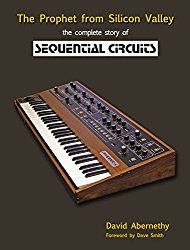
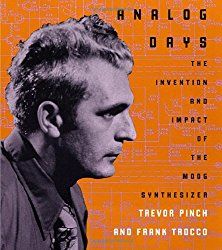
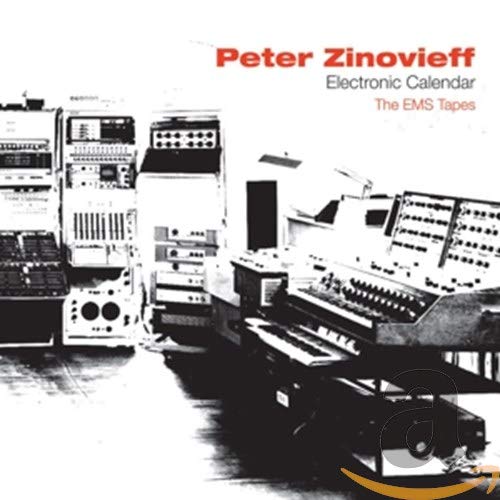
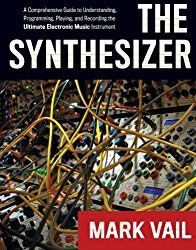

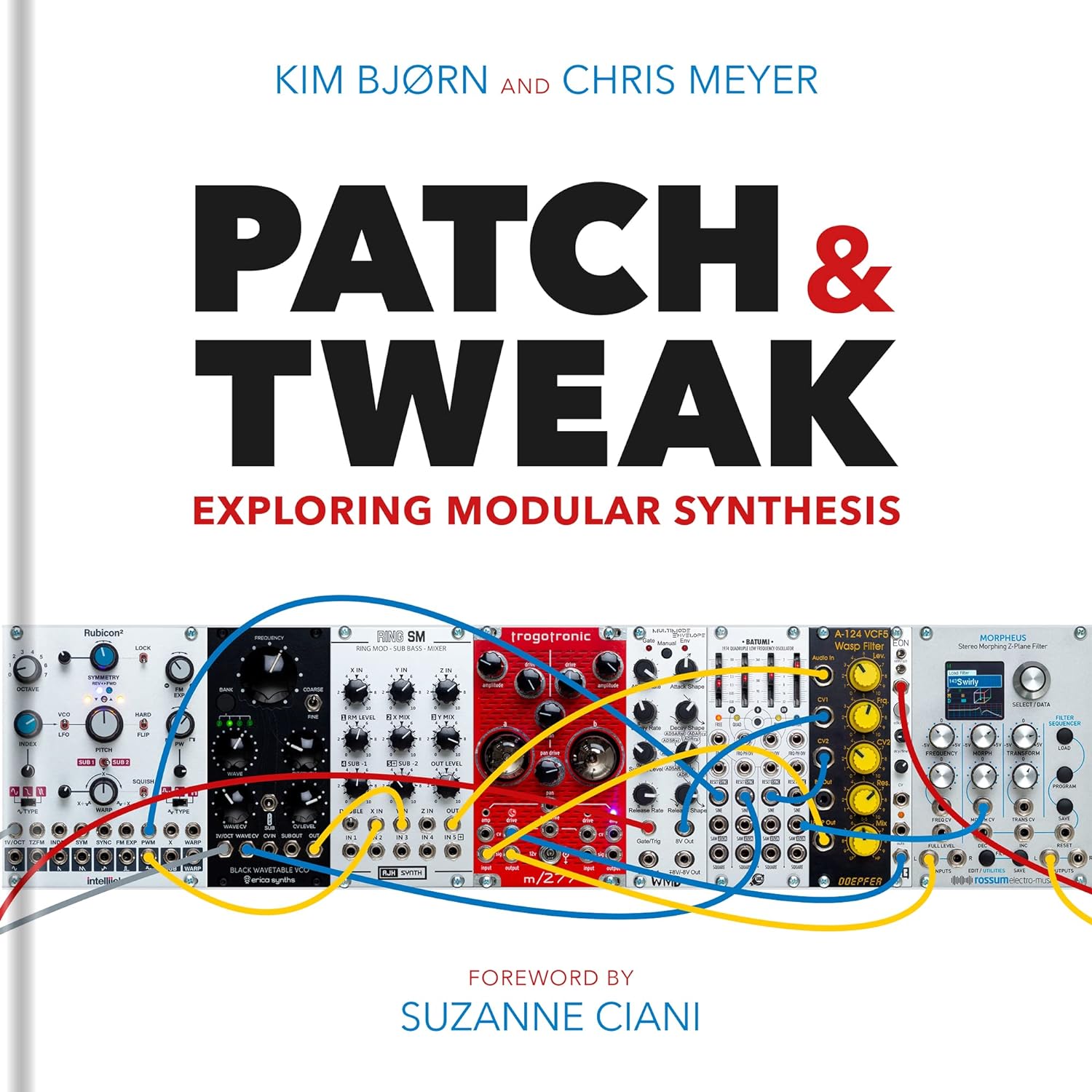
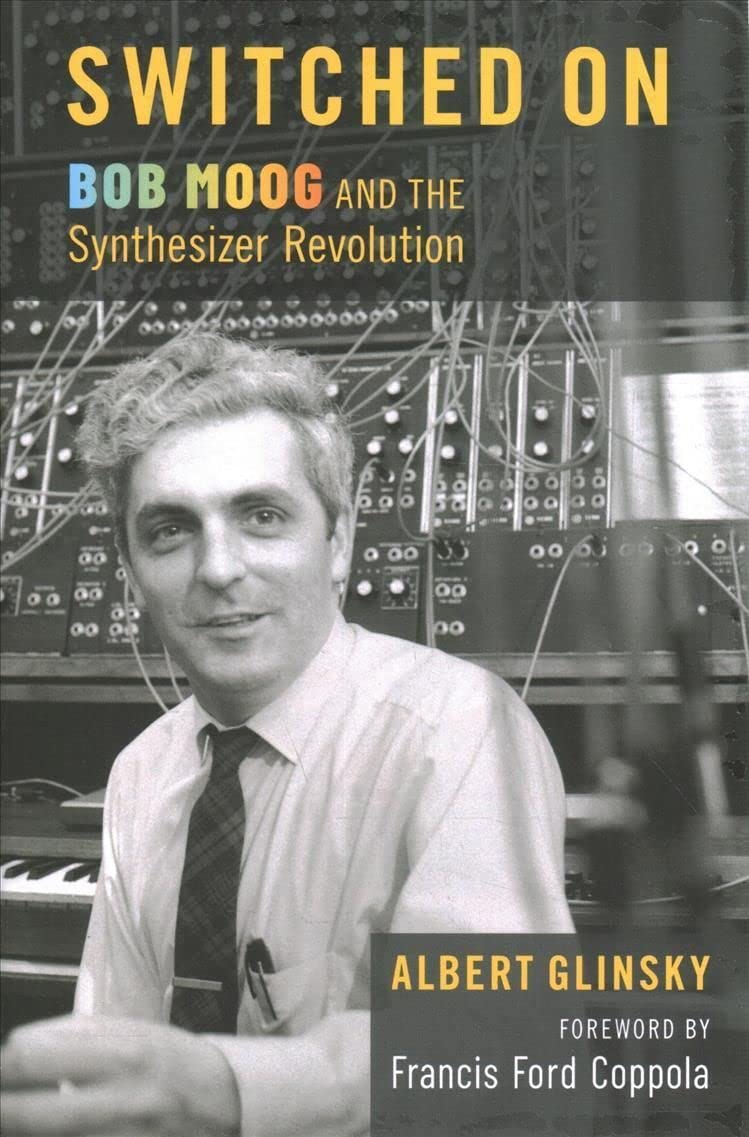
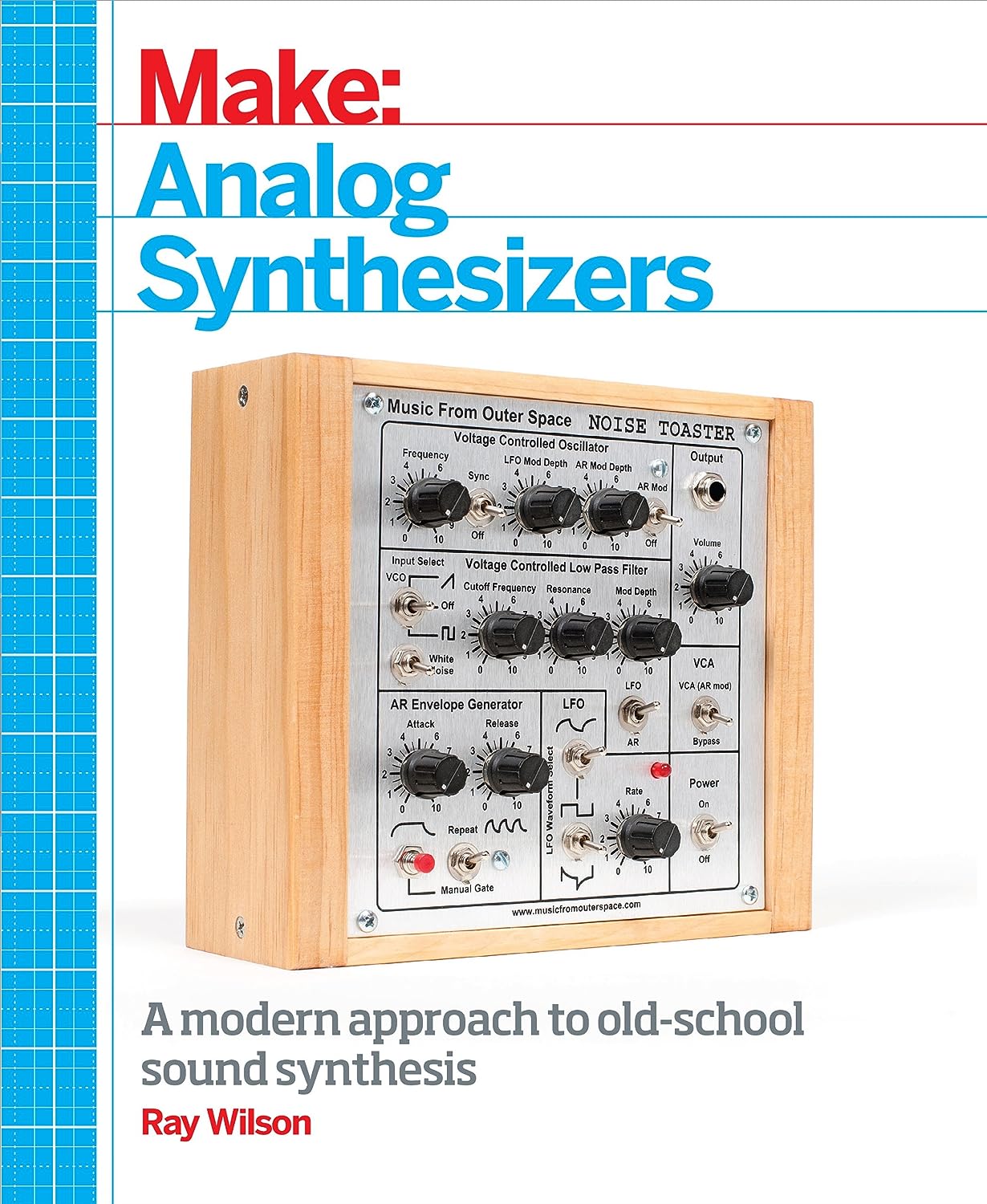
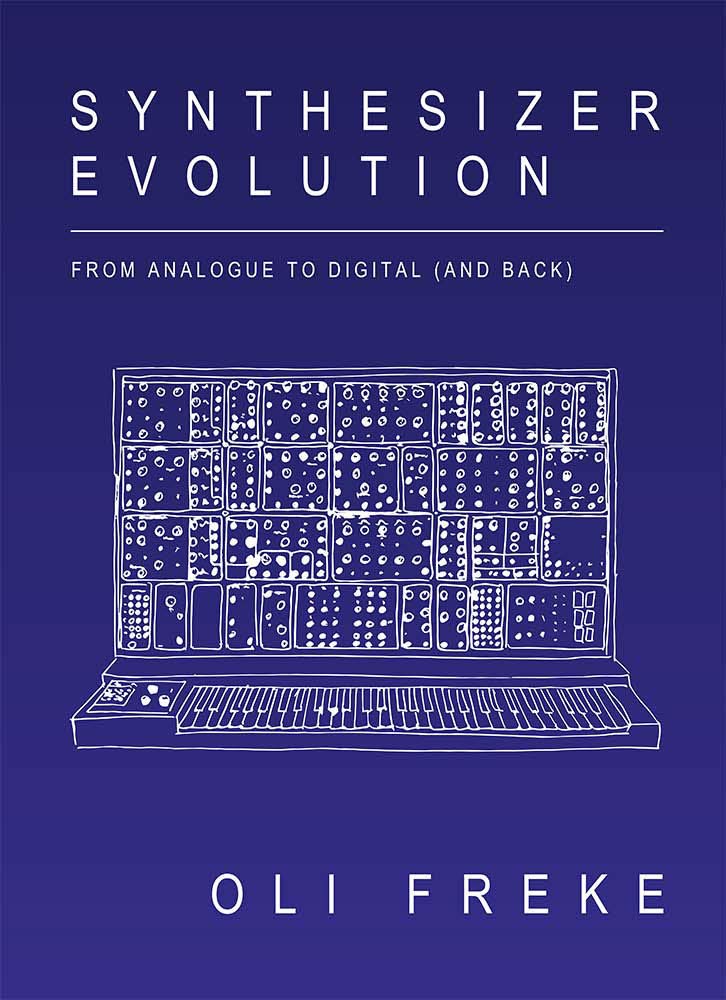

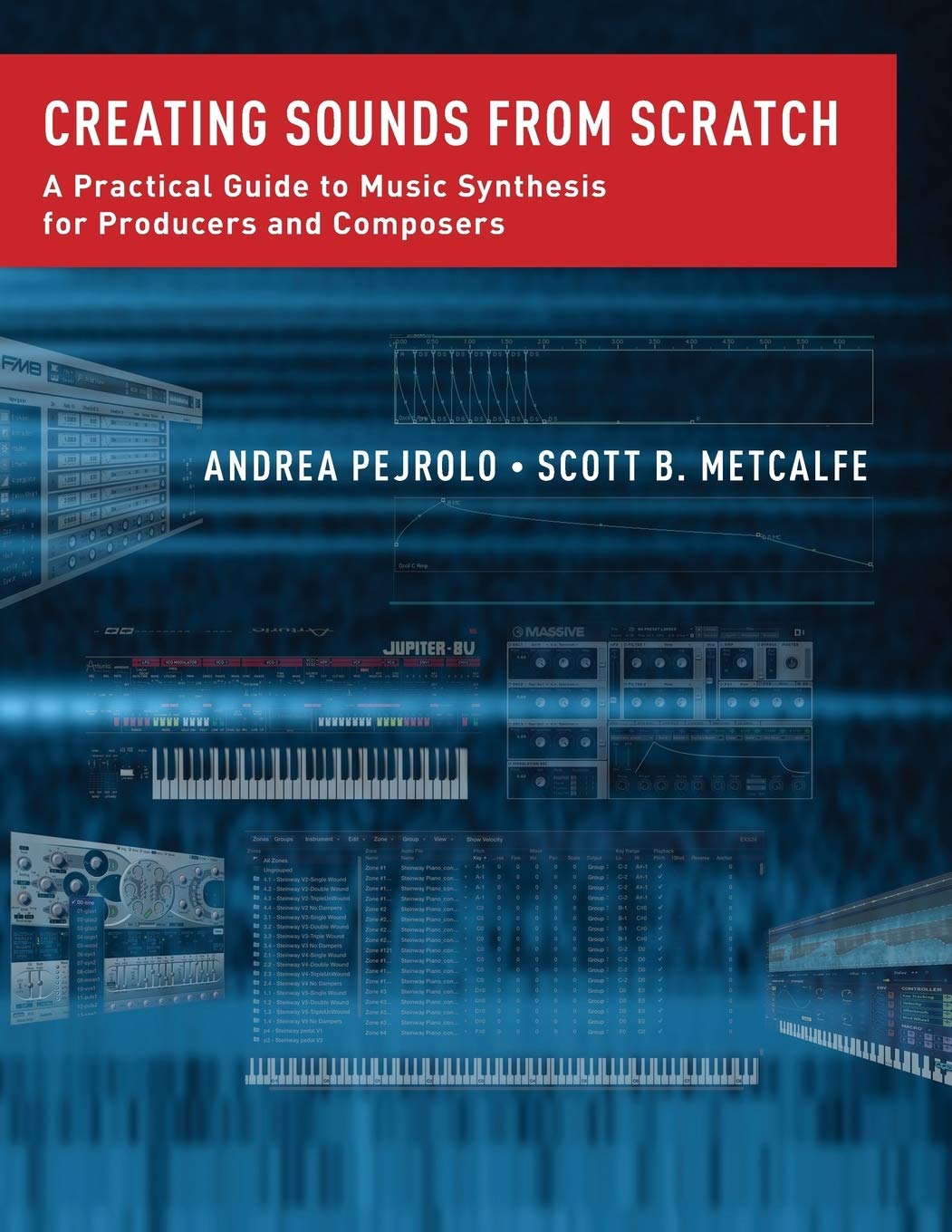


© Matrixsynth - All posts are presented here for informative, historical and educative purposes as applicable within fair use.
MATRIXSYNTH is supported by affiliate links that use cookies to track clickthroughs and sales. See the privacy policy for details.
MATRIXSYNTH - EVERYTHING SYNTH













© Matrixsynth - All posts are presented here for informative, historical and educative purposes as applicable within fair use.
MATRIXSYNTH is supported by affiliate links that use cookies to track clickthroughs and sales. See the privacy policy for details.
MATRIXSYNTH - EVERYTHING SYNTH























